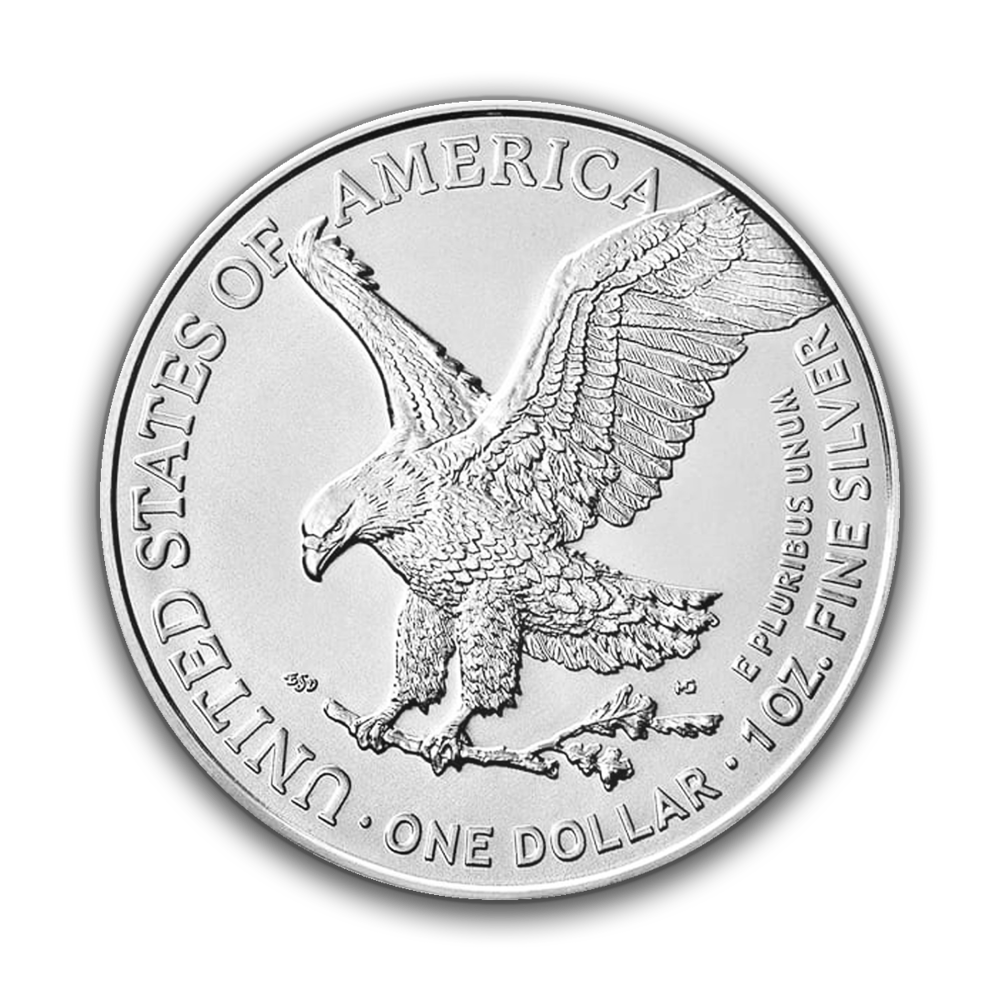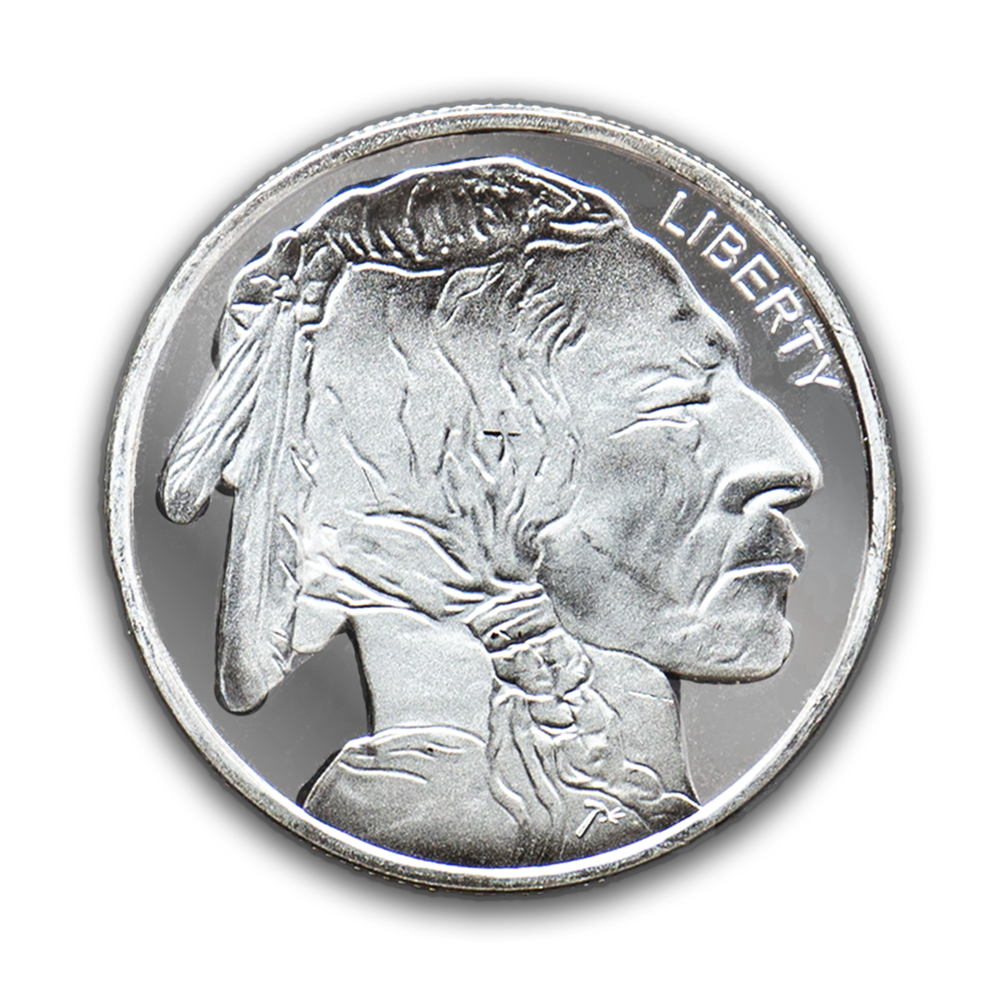Posted on November 11, 2021

For many people, finding suitable precious metals to invest in can be a challenge. Everyone seems to be familiar with gold as a safe haven in which to ride out the storm of a tumultuous market. But what about silver bullion? Does it make sense to buy silver bullion, and if so, what kind?
There are many ways to buy and invest in silver; the two most popular choices among individuals are silver rounds and silver coins. While the two share several similarities, it is essential to define and understand the differences between them. We will be exploring the differences between silver coins and silver rounds and examining the benefits of each, along with their similarities and differences.
 The one unchanging characteristic that makes a silver coin a silver coin is that it is minted by a government. Being a product of a government mint, silver coins have a face value that is honored by the issuing government. Silver coins must adhere to a strict set of standards.
The one unchanging characteristic that makes a silver coin a silver coin is that it is minted by a government. Being a product of a government mint, silver coins have a face value that is honored by the issuing government. Silver coins must adhere to a strict set of standards.
These standards ensure that each minted silver coin meets the specific purity, size, and weight requirements. Modern government-minted silver coins are very pure, consisting of 0.999 or 0.9999 fine silver. Weight and size may vary (rarely less than 1 oz), but all the coins must all be produced according to the predetermined, uniform standards from the government. In other words, silver bullion coins may be considered fungible, or interchangeable. With one exception:
Like other coins manufactured by government mints, silver coins also bear the mintage year on them. Some mintage years might possibly become more desirable than others. However, for the most part, it’s safe to assume silver bullion coins are fungible.
As with all other government currency, a silver coin has a face value or spending power set by the government mint. That means that regardless of the melt value (the value of the coin’s silver if it were to be melted down, weighed, and sold), the coin is worth, at a minimum, its assigned face value. While it is extremely unlikely that someone would choose to use a silver coin for its face value, it is always an option. (Just try handing over a 5 oz America the Beautiful silver coin at the corner convenience store and see what happens…)
For these reasons, silver coins are in high demand worldwide and easily traded, bought, and sold. Governments offer a great deal of transparency around the silver coins they mint, making them easy to recognize and evaluate based on simple characteristics like the year they were minted. It’s almost always in the government’s best interests to produce the best quality, purest, most consistent coins they possibly can. (A sovereign mint’s reputation is worth far more to the nation than, say, the money that could be made on a run of debased coins.)
While most silver coins trade for slightly more than the spot price or the current per-ounce market price if an asset like silver was sold “on the spot,” some coins can have numismatic value. For example, silver coins that are rare, historic, or part of a limited run, can often command a higher price simply because of their scarcity and desirability to collectors.
Despite carrying a face value, most silver coins are actually bought and sold as investments. Individuals speculating on the price of silver may be interested in the value of the metal itself, while others may trade based on the numismatic value of silver coins.
 Silver rounds are, quite simply, silver coins that aren’t produced by a government or sovereign mint. For this reason, they have no face value, not even a penny. They aren’t official money in any nation. While they usually look like coins, they are not. In order to be very explicit regarding the difference between official coins and unofficial coin-shaped silver pieces, we use the industry phrase “silver rounds” to differentiate private mintages from government mintages.
Silver rounds are, quite simply, silver coins that aren’t produced by a government or sovereign mint. For this reason, they have no face value, not even a penny. They aren’t official money in any nation. While they usually look like coins, they are not. In order to be very explicit regarding the difference between official coins and unofficial coin-shaped silver pieces, we use the industry phrase “silver rounds” to differentiate private mintages from government mintages.
Private mints usually make silver rounds, so there are no government guarantees. On the other hand, remember, reputation in the precious metals world is everything. Long-established private mints work very hard to maintain their reputations for high-quality products and fair, honest deals.
Since private mints make them, silver rounds do not go through the process of legislative approval and strict regulations. Silver rounds can include various designs such as animals, cartoon characters, national symbols, characters from movies, corporate logos or portraits of leaders or historical figures. Sometimes silver rounds are minted that resemble historical or circulation coins; when this is the case, they’re clearly marked “Replica.”
Rounds usually sell for just over the spot price of silver and are a very affordable way to get some investment exposure to silver. They are a great physical asset, and, as a bonus, they are often stackable if purchased from the same mint. It’s easier to imagine bartering with a handful of silver rounds rather than, say, a 100 oz silver bar. (It’s tough to “make change” in situations like that.)
Rounds have a variety of designs that can change every year, and while they can come in many sizes, one ounce is the most common. Most rounds do not have any kind of collectible value and can present some challenges when it comes to selling or bartering. Many buyers of silver rounds will often require an evaluation to assess the weight and purity of the silver. On the other hand, some silver rounds are explicitly works of art and may command a price well over their melt value. (Usually, BullionMax sticks to selling the simpler kind of silver round based on weight alone – we don’t even look at the designs when we pack them up to fulfill your order.)
To the average eye, there are many similarities between silver coins and silver rounds. However, you might not even be able to decipher the difference at first glance. That said, there are some key differences to consider as well.
| Similarities | Differences |
|---|---|
| Round, made of silver | Government mints make coins; private mints typically make rounds |
| Both can be worth the spot value of silver or melt value | Coins have a face value and (potentially) numismatic value; rounds do not |
| Store of value | Coins have uniform size, weight, and purity standards backed by governments; rounds do not |
| Both used primarily as an investment and safe haven against market uncertainties | Silver rounds cannot have the identical dimensions used in silver coins (that would be counterfeiting) |
| Both rare coins and rounds (such as commemorative rounds) may have increased value above the silver spot price | Coins are marked with mintage years; rounds bear stamps like "R" or "COPY" to denote they are not government-issued currency |
| Easy to store and own physically | Coins can have numismatic value and are "fungible" and easier to trade |
| Rounds are generally less expensive than coins (closer to the silver spot price) |
Silver coins and silver rounds are both great ways to invest in silver. If you are looking to find the most affordable way to invest strictly in the value of silver as a metal, silver rounds are your best bet. If you have an interest in numismatics, historical value, or building a collection, silver coins are probably the best option.
There are plenty of commemorative or collectible silver rounds, but they are rarely ever worth more than their melt value. Suppose your goal is to enjoy exposure to silver with the additional benefits of a government guarantee of purity and size, more liquidity, and the potential for an investment piece that appreciates. In that case, silver coins could be an excellent fit for you.
Whether you’re interested in silver coins or rounds or a mixture of both, you can make an order of either at BullionMax.com today.